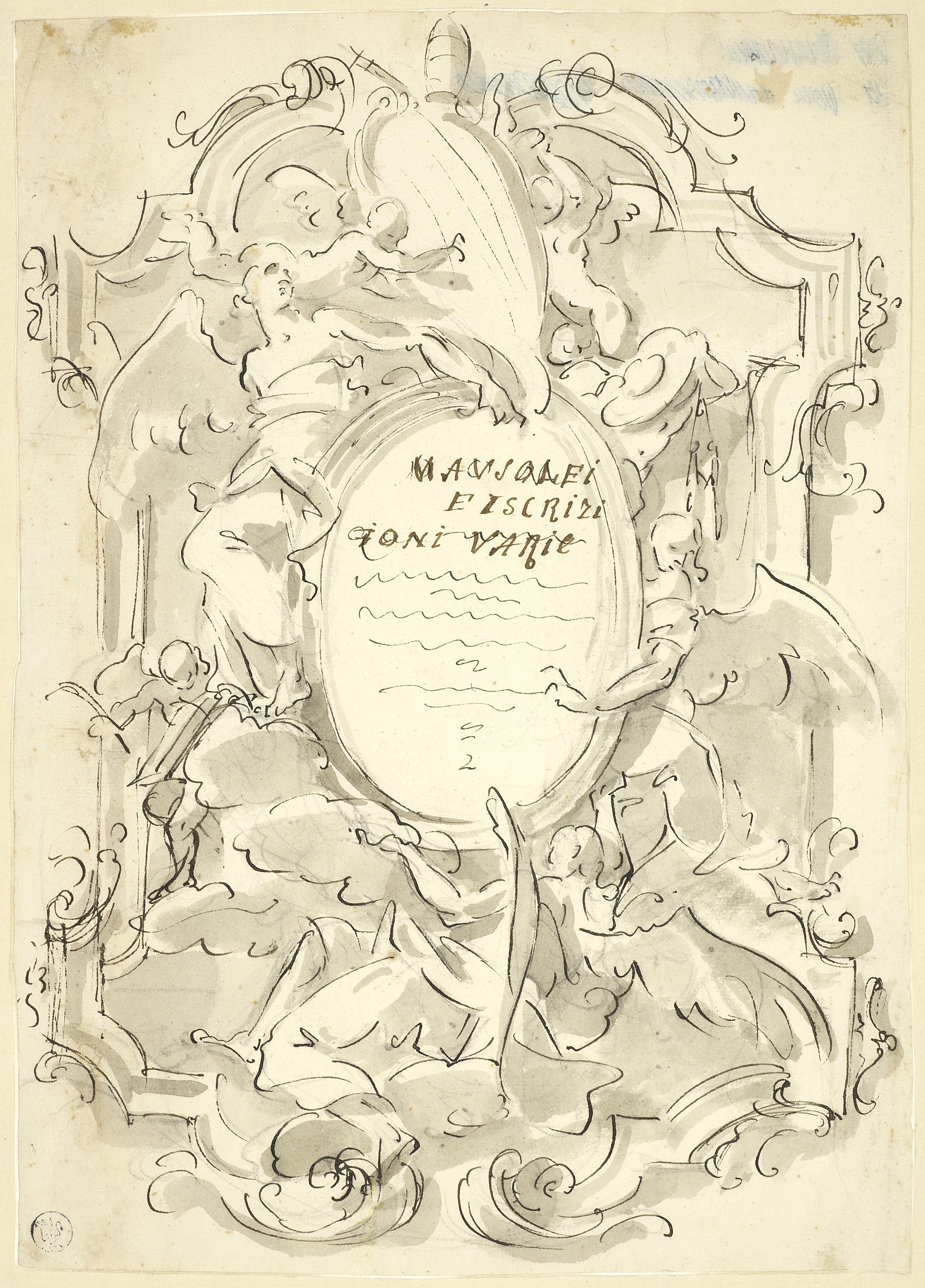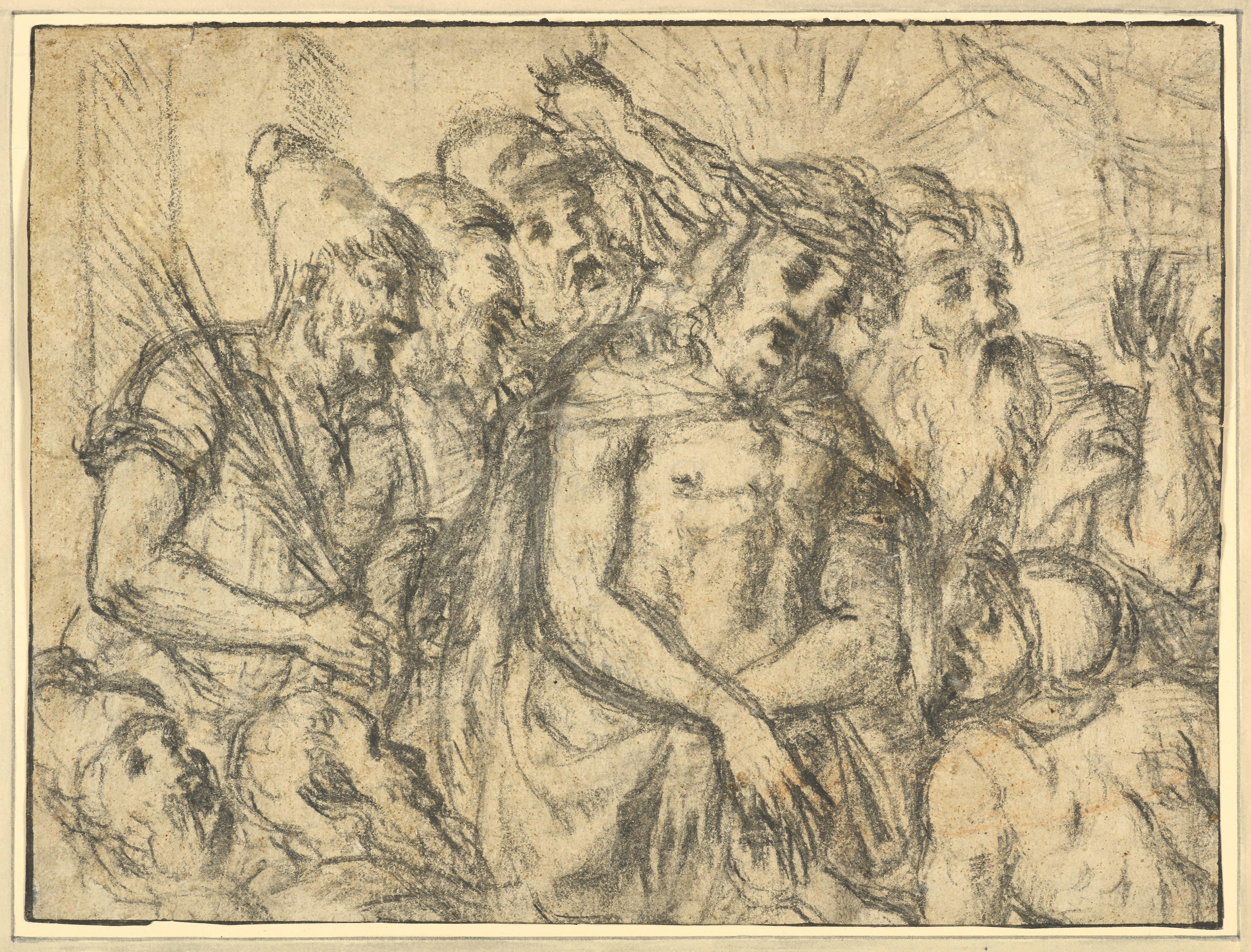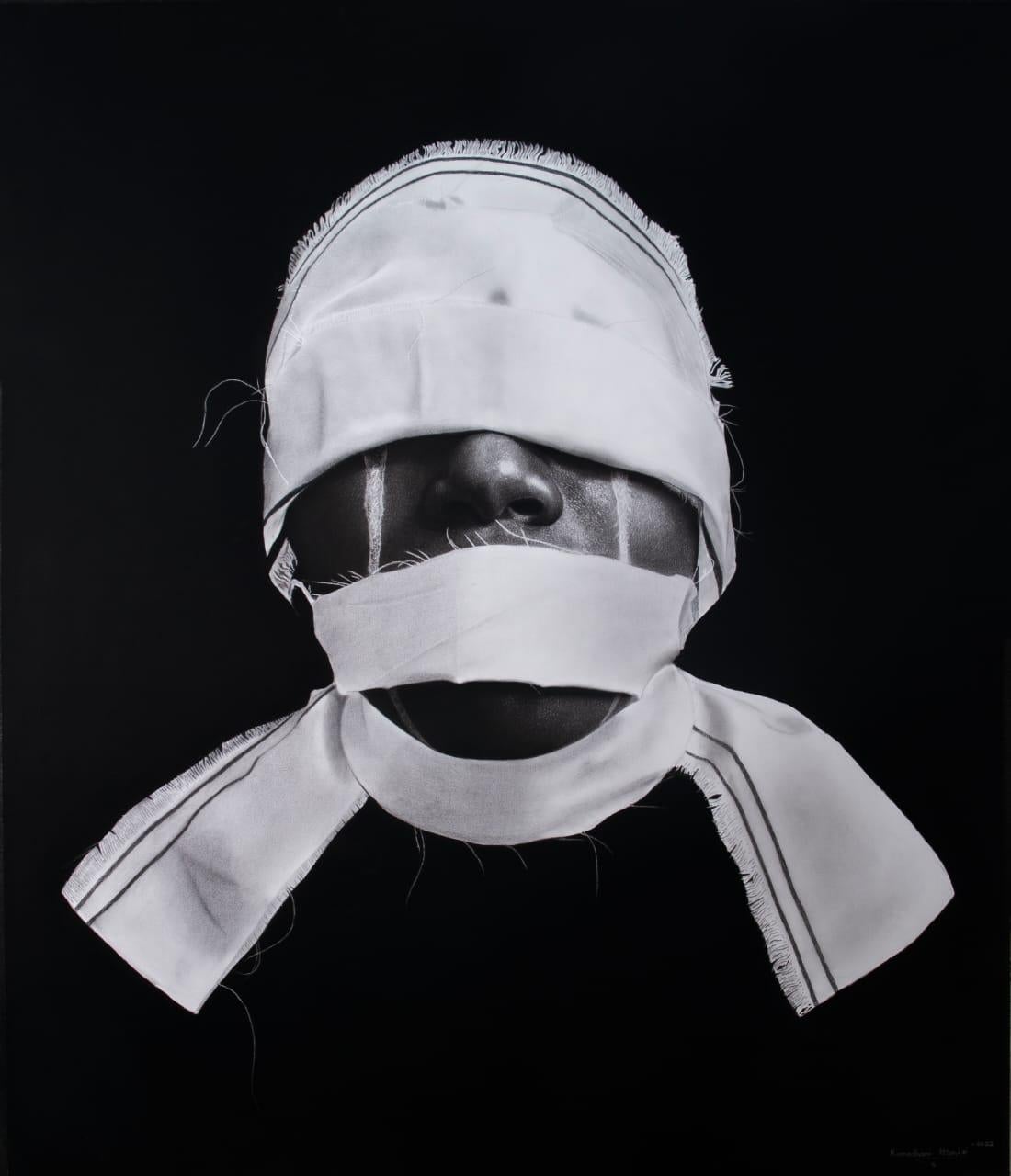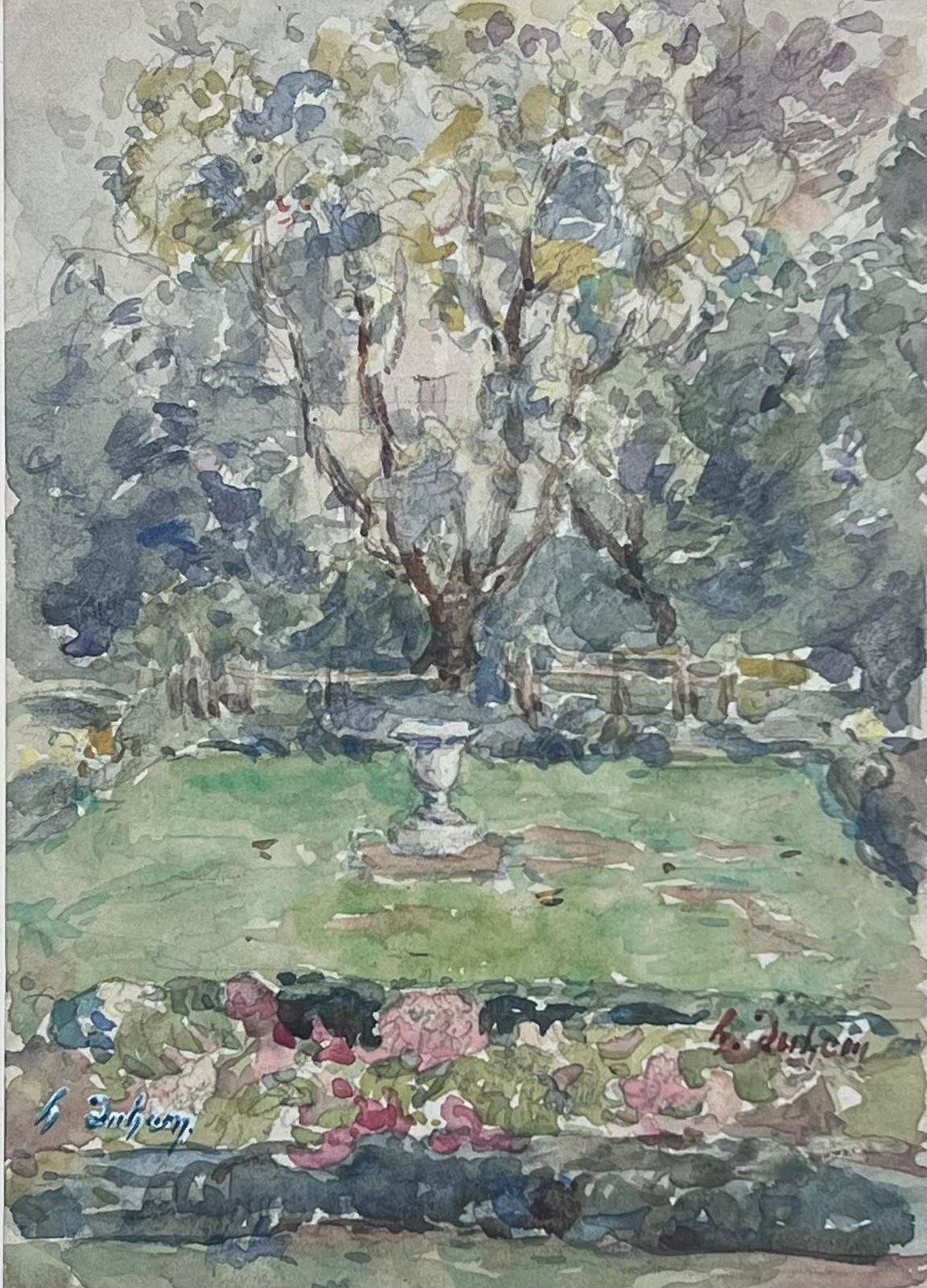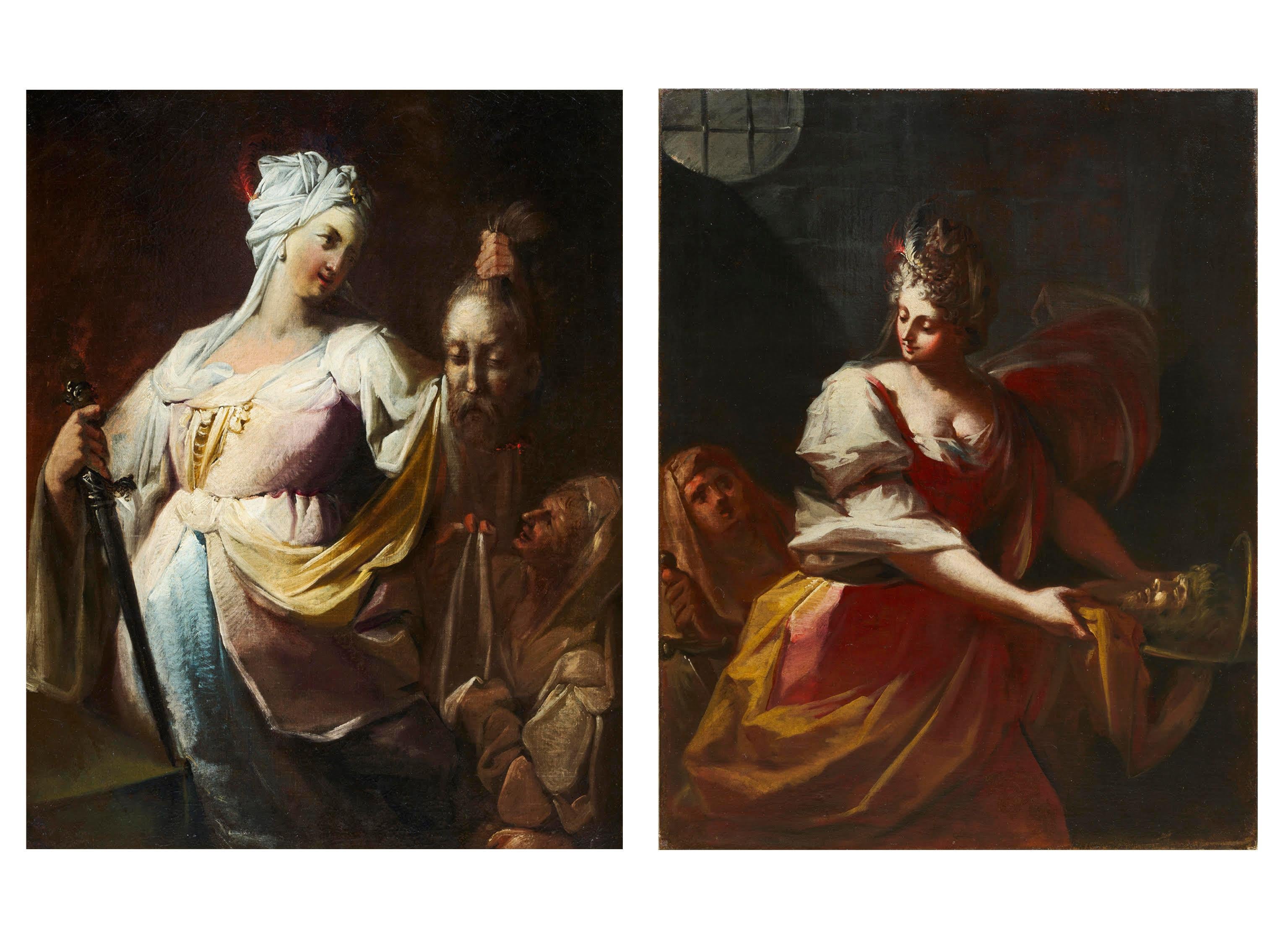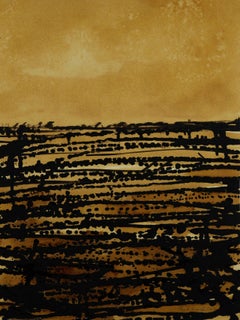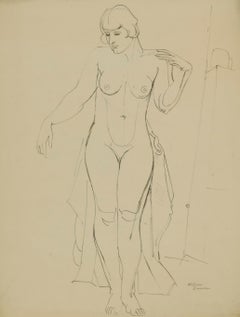
Anatomical Study of a Striding Male Nude with Left Arm Raised
View Similar Items
Want more images or videos?
Request additional images or videos from the seller
1 of 5
Eugène DelacroixAnatomical Study of a Striding Male Nude with Left Arm RaisedLate 18th - early 19th century
Late 18th - early 19th century
About the Item
- Creator:Eugène Delacroix (1798-1863, French)
- Creation Year:Late 18th - early 19th century
- Dimensions:Height: 11.25 in (28.58 cm)Width: 13.5 in (34.29 cm)
- Period:
- Condition:Slight crease top left and bottom right with a very small area of missing paper. Original Condition.
- Gallery Location:Fairlawn, OH
- Reference Number:Seller: FA79331stDibs: G13032114065
Eugène Delacroix
Ferdinand Victor Eugène Delacroix (French: 26 April 1798 – 13 August 1863) was a French Romantic artist regarded from the outset of his career as the leader of the French Romantic school. In contrast to the Neoclassical perfectionism of his chief rival Ingres, Delacroix took for his inspiration the art of Rubens and painters of the Venetian Renaissance, with an attendant emphasis on colour and movement rather than clarity of outline and carefully modelled form. Dramatic and romantic content characterized the central themes of his maturity, and led him not to the classical models of Greek and Roman art, but to travel in North Africa, in search of the exotic. Friend and spiritual heir to Théodore Géricault, Delacroix was also inspired by Lord Byron, with whom he shared a strong identification with the "forces of the sublime", of nature in often violent action. However, Delacroix was given to neither sentimentality nor bombast, and his Romanticism was that of an individualist. In the words of Baudelaire, "Delacroix was passionately in love with passion, but coldly determined to express passion as clearly as possible."Together with Ingres, Delacroix is considered one of the last old Masters of painting and is one of the few who was ever photographed. As a painter and muralist, Delacroix's use of expressive brushstrokes and his study of the optical effects of colour profoundly shaped the work of the Impressionists, while his passion for the exotic inspired the artists of the Symbolist movement. A fine lithographer, Delacroix illustrated various works of William Shakespeare, the Scottish author Walter Scott, and the German author Johann Wolfgang von Goethe.
About the Seller
5.0
Recognized Seller
These prestigious sellers are industry leaders and represent the highest echelon for item quality and design.
Platinum Seller
These expertly vetted sellers are 1stDibs' most experienced sellers and are rated highest by our customers.
Established in 1978
1stDibs seller since 2013
713 sales on 1stDibs
Typical response time: 1 hour
Associations
International Fine Print Dealers Association
More From This SellerView All
- The Mouth of HoneyBy George Wesley BellowsLocated in Fairlawn, OHThe Mouth of Honey Lithographic crayon and mixed media on paper mounted to support paper Initialed by the artist "GB" bottom center on image. (see photo) Titled in pencil in bottom m...Category
1920s Ashcan School Drawings and Watercolor Paintings
MaterialsCrayon
- UntitledBy Ray H. FrenchLocated in Fairlawn, OHSigned and dated "1962" by the artist lower right. Mixed media on heavy paper. Done for a show to fund a trip to Italy.Category
1960s Abstract Abstract Drawings and Watercolors
MaterialsInk, Mixed Media
- Standing Female NudeBy William SommerLocated in Fairlawn, OHStanding Female Nude Match stick and ink drawing, c. 1925 Signed with the estate stamp B Sheet size: 21 x 16 inches Created at the Kakoon Arts Klu...Category
1920s American Modern Nude Drawings and Watercolors
MaterialsInk
- Standing Nude, hand on a plinthLocated in Fairlawn, OHStanding Nude, hand on a plinth Graphite on paper, c. 1900 Signed with a double tri lobed symbol upper left corner (see photo) Condition: excellent, slight surface dirt Sheet size: 1...Category
Early 1900s Art Nouveau Drawings and Watercolor Paintings
MaterialsGraphite
- Untitled (Joe and Patsy LoGuidice at the Casa Luna)By Larry RiversLocated in Fairlawn, OHUntitled (Joe and Patsy LoGuidice at the Casa Luna) Pastel, charcoal and colored pencil, 1970-1975 Signed lower right in pencil: Larry Rivers Inscribed on the rabbit of the original white frame: LOGUIDICE in ink Provenance: Private Collection, New York (Westchester County) Condition: Excellent Image size: 31 1/2 x 24 1/2 inches Frame size: 39 1/2 x 32 1/2 inches Note: The image depicts Ciprian “Joe” LoGuidice (d. 2008) and his wife Patsy with their dog (Golden Retriever?) in their famous house Casa Luna, located in Zihautenajo, Mexico. Joe LoGuidice had a most colorful life as stated in his memorial posting by Pam Barkentin: Ciprian "Joe" LoGiudice, of Los Angeles and Zihautanejo, Mexico Art Dealer, Political Activist, Environmentalist, Film Producer, and Executor of the Terry Southern Estate died at home in Los Angeles on September 3, 2008. A major benefactor of the Chicago Seven, he hosted a benefit for the anti-war activists at his Ontario Street Gallery in Chicago and later harbored the fugitive Abbie Hoffman in Zihautenajo where Joe designed and built the famous Casa Luna, the house without walls, in a compound that included Larry River's Studio as well as the garden where Julian Schnabel painted with the assistance of Ramon Pedrazo, Joe's gardener and the husband of his faithful housekeeper, Concha Pedrazo. Here at Casa Luna, from the early seventies on, Joe and his wife, Patsy, generously hosted friends and enemies alike with great enthusiasm and humor.Most recently, through his participation in "Save the Bay", Joe was instrumental in preventing cruise ships from anchoring in the Bay of Zihautanejo. He was also producing "Five Easy Steps to Metaphysical Fitness", a documentary about the philosopher/comic, Emily Levine. Christo's first wrapping of a building in the United States, the Chicago Museum of Art, was produced by LoGiudice. Other artists he represented, in both his Chicago and New York Galleries, included John Chamberlin, Larry Poons, Mark de Suvero, Leon Golub and Jules Olitski. Joe is survived by his wife of 25 years, Patsy Cummings. An important work by Rivers showing his friend and art dealer in their famous house, Casa Luna, in Mexico. The cultural import of LoGuidice cannot be understated. He was a major figure in the New York, Chicago, and Los Angeles art cultures. The artist’s who were his friends and guests were many of the leading icons of late 20th century art. Larry Rivers Larry Rivers in 1961 Born Yitzroch Loiza Grossberg August 17, 1923 Bronx, New York, U.S. Died August 14, 2002 (aged 78) Southampton, New York, U.S. Nationality American Education Hans Hofmann School Known for Painting, sculpture Movement East Coast figurative painting, new realism, pop art Spouse(s) Augusta Berger (m. 1945; div. 1946) Clarice Price (m. 1961; sep. 1967) Larry Rivers (born Yitzroch Loiza Grossberg, August 17, 1923 – August 14, 2002) was an American artist, musician, filmmaker and occasional actor. Rivers resided and maintained studios in New York City, Southampton, Long Island, and Zihuatanejo, Mexico. Early life Larry Rivers was born in the Bronx to Samuel and Sonya Grossberg, Jewish immigrants from Ukraine. From 1940–1945 he worked as a jazz saxophonist in New York City, changing his name to Larry Rivers in 1940 after being introduced as "Larry Rivers and the Mudcats" at a local pub. He studied at the Juilliard School of Music in 1945–46, along with Miles Davis, with whom he remained friends until Davis's death in 1991. Training and career Larry Rivers in 1961 Rivers is considered by many scholars to be the "Godfather" and "Grandfather" of Pop art, because he was one of the first artists to really merge non-objective, non-narrative art with narrative and objective abstraction. Rivers took up painting in 1945 and studied at the Hans Hofmann School from 1947–48. He earned a BA in art education from New York University in 1951. He was a pop artist of the New York School, reproducing everyday objects of American popular culture as art. He was one of eleven New York artists featured in the opening exhibition at the Terrain Gallery in 1955. During the early 1960s Rivers lived in the Hotel Chelsea, notable for its artistic residents such as Bob Dylan, Janis Joplin, Leonard Cohen, Arthur C. Clarke, Dylan Thomas, Sid Vicious and multiple people associated with Andy Warhol's Factory and where he brought several of his French nouveau réalistes friends like Yves Klein who wrote there in April 1961 his Manifeste de l'hôtel Chelsea, Arman, Martial Raysse, Jean Tinguely, Niki de Saint-Phalle, Christo, Daniel Spoerri or Alain Jacquet, several of whom left, like him, some pieces of art in the lobby of the hotel for payment of their rooms. In 1965 Rivers had his first comprehensive retrospective in five important American museums. His final work for the exhibition was The History of the Russian Revolution, which was later on extended permanent display at the Hirshhorn Museum and Sculpture Garden in Washington, DC. During 1967 he was in London collaborating with the American painter Howard Kanovitz. In 1968, Rivers traveled to Africa for a second time with Pierre Dominique Gaisseau to finish their documentary Africa and I, which was a part of the groundbreaking NBC series Experiments in Television. During this trip they narrowly escaped execution as suspected mercenaries.[citation needed] During the 1970s Rivers worked closely with Diana Molinari and Michel Auder on many video tape projects, including the infamous Tits, and also worked in neon. Rivers's legs appeared in John Lennon and Yoko Ono's 1971 film Up Your Legs Forever. Personal life Rivers married Augusta Berger in 1945, and they had one son, Steven. Rivers also adopted Berger's son from a previous relationship, Joseph, and reared both children after the couple divorced. He married Clarice Price in 1961, a Welsh school teacher who cared for his two sons. Rivers and Clarice Price had two daughters, Gwynne and Emma. After six years, they separated. Shortly after, he lived and collaborated with Diana Molinari, who featured in many of his works of the 1970s. After that Rivers lived with Sheila Lanham, a Baltimore artist...Category
1970s Contemporary Figurative Drawings and Watercolors
MaterialsPastel
- Dad Taught Me to Be Brave, No. 3By Darius StewardLocated in Fairlawn, OHDad Taught Me to Be Brave , No. 3 (Hand touching lips) Signed with the artist's initials. Watercolor on Yupo paper Series: Dad Taught Me to Be Brave (3 waterc...Category
2010s Contemporary Portrait Drawings and Watercolors
MaterialsWatercolor
You May Also Like
- Leila K Williamson (fl.1884-1919) - Framed Watercolour, Leaving ChurchLocated in Corsham, GBA delightful early 20th century watercolour depicting a group of local children leaving church after attending Sunday school. The watercolour has been signed by the artist to the low...Category
Early 20th Century Figurative Drawings and Watercolors
MaterialsWatercolor
- Elizabeth Heia-Stocke (1904-1956) - Early 20thC Gouache, Resting Under MoonlightLocated in Corsham, GBAn unusual scene with mystical narrative, showing a figure resting in a grassy park by trees, under a bright, moonlit sky. Rows of charmingly naive houses are seen beyond the trees. ...Category
20th Century Portrait Drawings and Watercolors
MaterialsGouache
- Study for a Frontispiece, a baroque drawing by Giovanni Antonio PellegriniBy Giovanni Antonio PellegriniLocated in PARIS, FRThis masterly frontispiece study, executed with a very sure hand, testifies to the survival of the great Baroque taste in 18th century Venice. It could be one of the very last works by Giovanni Antonio Pellegrini: the few lines that cross the papal arms evoke those of Benedict XIV, who became pope in 1740, one year before the artist's death. 1. Giovanni Antonio Pellegrini and the European influence of Venetian history painting in the 18th century Giovanni Antonio Pellegrini was born in Venice in 1675 and trained in the studio of the Milanese painter Paolo Pagani (1655 - 1716). Pagani, who had been living in Venice since 1667, took him to Moravia and Vienna from 1690 to 1696. After a stay in Rome from 1699 to 1701, Pellegrini married Angiola Carriera in 1704, the sister of the great pastelist Rosalba Carriera. From 1708 onwards, Pellegrini left Venice and began an extensive tour of Europe: he worked in England between 1708 and 1713, where he met great success, particularly at Kimbolton Castle and Castle Howard. He then worked in Germany and the Netherlands, then in Bohemia and Austria, before returning briefly to England in 1719. In 1720 he was in Paris where he decorated the ceilings of the Royal Bank for John Law...Category
1740s Old Masters Figurative Drawings and Watercolors
MaterialsInk
- Christ before Herod, a drawing from the School of TitianLocated in PARIS, FRThis vigorous drawing is clearly inspired by the numerous compositions on the Ecce Homo theme which were produced by Titian and his workshop at the painter's maturity. However, the number of characters and their expressionist treatment, the many variations to Titian's paintings reveal a drawing made by an original artist, perhaps of foreign origin, belonging to the peripheral circle of the "Titian solar system”, as described by the art historian Enrico Maria del Pozzolo. 1. Titian, the leading artist of 16th century Venetian painting and his botteghe Tiziano Vecelli (or Vecellio), known as Titian, was born between 1489 and 1490 in Pieve di Cadore in the Veneto region of Italy into a wealthy family of soldiers and lawyers. At the age of 15, he joined the studio of Giovanni Bellini, where he became friend with Giorgione, ten years his senior. Giorgione introduced him to a new pictorial style in which forms are defined by colour and pictorial substance, freeing himself from the meticulous underlying drawings characteristic of Bellini's painting. Titian became the official painter of the Republic of Venice upon Bellini's death in 1516. In 1518, the completion of his Assumption for the church of Santa Maria Gloriosa dei Frari in Venice established his reputation as the leading painter of the Venetian school: throughout his career, Titian had a considerable impact on other artists of his time, whether they were direct collaborators, occasional contributors, or other artists under his influence. Considered one of the greatest portraitists of his time, his fame spread throughout Europe and he became the official painter of the greatest European families: the Gonzagas, the Farneses (Alessandro Farnese, of whom he executed several portraits, was elected pope in 1534 under the name of Paul III), the Habsburgs (he went to Augsburg in 1548 to paint the portrait of Charles V and King Philip II of Spain, his successor, later became the artist's main patron). As Titian almost reached the age of 90 years, he saw during his lifetime the death of many of his loved ones (his wife Cecilia, his brother Francesco and his son Orazio). A pathetic feeling appears in his late artworks, such as his famous Pieta, his last work intended to decorate his tomb which remained unfinished. Titian's success was also based on the establishment of a large and versatile workshop, which, alongside the traditional assistance in the production of certain paintings, ensured the publication of numerous woodcuts, allowing the master's works to be widely distributed. Long ignored by art historians, the individual stories of these various collaborators, the organisation of this workshop and the interactions of the collaborators with the master are at the heart of contemporary studies on the artist. 2. A complex composition with expressionist overtones Executed with great virtuosity in black chalk, the composition of our drawing is complex, even slightly confused and probably reflects several phases of execution, if not several hands. The scene is organised around the characters of Christ and an executioner wearing a Phrygian cap. Christ is presented at mid-body, slightly at an angle, his torso bare, his shoulders draped in a cloak, his hands clasped together and probably bound. His head, as if weighed down by the crown of thorns, is slightly bent forward. The eyes and mouth are hollowed out by the black chalk to better express his sorrow. The man wearing a Phrygian cap holds a whip in his right hand, while his left hand, barely outlined, seems to be pulling aside Christ's tunic as if he were about to scourge him. Two other men, who may have been added at a later stage, occupy the space between the executioner and Christ. One is depicted in profile, while the one behind Christ appears to be wearing a military helmet. In an indistinct gesture, his left arm is raised as if to strike Christ. Slightly behind Jesus on his left side, appears a bearded old man wearing a turban. With his left arm raised, he holds out the palm of his hand in a gesture of amazement. His face is finely executed and contrasts with the hand depicted in a rather crude manner. This character may also have been added at a later stage, as he does not fit in perfectly behind the group formed by Jesus and his executioner. This frieze is completed in the left foreground by two additional figures depicted in three-quarter view. Soberly sketched but with great fluidity, only their heads emerge, as if Christ and his executioners were situated on a pedestal above a large crowd. Finally, on the right-hand side of the composition, a second helmeted soldier is depicted. His musculature can be seen under his armour while he stares intently at Christ. He is smaller than the other figures, even though he appears in the front row, revealing a certain clumsiness on the part of the artist. 3. Ecce Homo, one of Titian’s favourite subjects in his twilight years In 1543, Titian tackled the theme of the Ecce Homo in a masterly composition now in the Kunsthistorisches Museum in Vienna. Christ is presented by Pilate, dressed in an antique costume, at the top of a staircase, in a large, highly architectural setting animated by a crowd of characters. The title of the painting refers to a passage from the Gospel of St John (19, 1-5): “Then Pilate took Jesus and had him flogged. The soldiers twisted together a crown of thorns and put it on his head. They clothed him in a purple robe and went up to him again and again, saying, “Hail, king of the Jews!” And they slapped him in the face. Once more Pilate came out and said to the Jews gathered there, “Look, I am bringing him out to you to let you know that I find no basis for a charge against him.” When Jesus came out wearing the crown of thorns and the purple robe, Pilate said to them, “Here is the man!” From the 1540s onwards, Titian and his workshop repeatedly depicted the Christ of Sorrows for their principal patrons. In these paintings, Titian returned to the half-body format that he had practically abandoned since 1520 and refocused the composition (compared to the large 1543 Ecce Homo) on the figure of Christ, who is depicted alone or accompanied by a few figures. With his eyes lowered and his head slightly bowed, Titian's Christ seems calmly resigned to his fate. Powerless and submissive, he arouses deep pathos from the viewer. The tondo in the Louvre Museum shows Christ in a position very similar to that of our drawing, a position that will be found in most of Titian's Ecce Homo. To his right stands a helmeted soldier who seems to be baring his shoulder and to his left a servant of Pilate wearing a Phrygian cap. These two figures are reminiscent of the soldier in the lower right corner and the executioner in the left most part of our drawing. Various versions were executed by Titian and his workshop until the late 1560s, and the version that seems closest to the right-hand side of our drawing is the one in the Prado Museum. Although of uneven quality, it is interesting to note the gesture of Pilate's hand, holding out the palm of his left hand towards the viewer, as if to distance himself from the decision that the crowd will make. Recent X-rays of the painting have shown that the executioner on the right, depicted from behind, was originally depicted in profile (as in our drawing), and that the other two figures (Pilate on the left of Christ and a servant wearing a Phrygian cap on his right) were added later. The painting was then organised around the diagonal that crosses the canvas from left to right, emphasised by the light coming from the window, and centred on the exchange of glances between Christ and the executioner on his left. The profile of the old man in the foreground on the left could be inspired by that of the elderly Titian as it appears repeatedly in the painter's late artworks, such as the Madonna of Mercy in the Palatine Gallery. 4. A deeply original drawing, at the risk of confusion We saw in the last paragraph the various borrowings from Titian's depictions of the Ecce Homo that can be found in this drawing: the position of Christ, the presence of executioners wearing Phrygian caps and of helmeted soldiers, one of whom is looking at Christ in a position that evokes the repentance visible with X-ray in the Madrid painting...Category
16th Century Old Masters Figurative Drawings and Watercolors
MaterialsChalk
- Blinded and Dumbed IILocated in Miami, FLRealism Portrait DrawingCategory
2010s Photorealist Portrait Drawings and Watercolors
MaterialsCharcoal, Archival Paper, Pencil
$8,000 Sale Price20% Off - Septimo PasilloLocated in Miami, FLDagoberto Rodríguez Septimo Pasillo, 2021 Watercolor on paper 200 x 260 cm.Category
2010s Contemporary Abstract Drawings and Watercolors
MaterialsWatercolor
Price Upon Request
Recently Viewed
View AllMore Ways To Browse
Marble Statue Of A Man
Male Nude Statue
Nude Male Statue
Young Napoleon Painting
Hotel Antique Figure
Marble Nude Man
Male Nude 1990s
Male Body Marble
Antique Anatomical Drawings
Gladiator Statue
The Borghese Gladiator
Antique Ephesus
Gladiator Painting
Vintage Glasses Drawing
Watercolor Death
San Francisco Watercolor
Yellow Watercolor Painting
Watercolor Paintings Of A Flower


